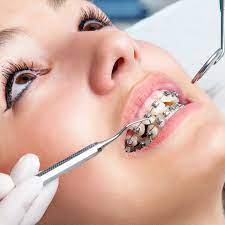Little Known Questions About Legacy Orthodontics.
Little Known Questions About Legacy Orthodontics.
Blog Article
Not known Details About Legacy Orthodontics
Table of ContentsLegacy Orthodontics for BeginnersEverything about Legacy OrthodonticsThe Only Guide for Legacy OrthodonticsThe Of Legacy OrthodonticsLittle Known Questions About Legacy Orthodontics.
At Advanced Orthodontics, we offer people with a all natural treatment experience. Additionally, we provide flexible treatment schedules, adaptable repayment choices and an enjoyable, satisfying experience. leesburg clear braces. Telephone call ( 480) 357-4900 today for more details and schedule a visit.An orthodontist is a dental expert trained to diagnose, stop, and deal with teeth and jaw irregularities. They deal with existing conditions and are educated to determine troubles that may develop in the future. Orthodontists function with people of any ages, from youngsters to grownups. People usually connect an ideal smile with healthiness.
Malocclusion, or misaligned teeth, can lead to dental problems, consisting of dental caries, gum condition, and hard or painful chewing. But not everybody is birthed with straight teeth. If you have a bad bite or huge areas between your teeth, you might wish to get in touch with a dental expert specializing in orthodontic care.
The Facts About Legacy Orthodontics Revealed
( Image Debt: DigitalVision/Getty Images) Orthodontists utilize fixed and detachable dental tools, like braces, retainers, and bands, to transform the placement of teeth in your mouth. Orthodontic treatment is for dental problems, including: Crooked teethBite problems, like an overbite or an underbiteCrowded teeth or teeth that are too much apartJaw misalignmentThe objective of orthodontic treatment is to enhance your bite.
A healthy and balanced bite ensures you can eat, eat, and speak effectively. While you could assume of orthodontists as mainly for youngsters or teenagers who require dental braces, they can correct dental issues at any type of age. Orthodontists attend university, oral institution, and orthodontic institution. After college graduation, they spend 2 or 3 years in an orthodontic residency program.
, but not all dental practitioners are orthodontists. They concentrate on two areas: Exactly how to properly and safely relocate teeth Exactly how to effectively assist growth in the teeth, jaw, and faceOnce an orthodontist has finished training, they have the alternative to end up being board certified.
Examine This Report about Legacy Orthodontics
Imbalance, or malocclusion, is the most usual factor individuals see an orthodontist. It is genetic and is the outcome of size distinctions in between the top and lower jaw or in between the jaw and teeth. Malocclusion results in tooth congestion, an irregular jaw, or uneven bite patterns. Malocclusion is normally treated with: Your orthodontist attaches metal, ceramic, or plastic square bonds to your teeth.
If you have only minor malocclusion, you may be able to utilize clear braces, called aligners, as opposed to traditional dental braces (https://www.wattpad.com/user/legacyortho1). Some individuals need a headgear to help relocate teeth right into line with pressure from outside the mouth. After dental braces or aligners, you'll require to wear a retainer. A retainer is a custom-made device that keeps your teeth in position.
They can develop additional area in the mouth without having to pull teeth. Orthodontists use wires, medical screws, or plates to sustain your jaw bone.
You might need to see an orthodontist if you have: Crowding or not adequate room for all of your teethOverbite, when your top teeth come over your bottom teethUnderbite, when your bottom teeth are as well far forwardSpacing or concerns with gapsCrossbite, which is when your upper teeth fit behind your base teeth when your mouth is closedOpen bite or a vertical space between your front base and top teethMisplaced midline, when the center of your bottom and top teeth don't line up Correcting an oral malocclusion can: Make attacking, chewing, and talking easierImprove the symmetry of our face and your general appearanceEase discomfort from temporomandibular joint conditionsSeparate your teeth and make them much easier to cleanse, aiding protect against dental cavity or cavities It's often a dental professional who first notices misaligned teeth during a routine examination.
10 Easy Facts About Legacy Orthodontics Described

Throughout your very first orthodontic assessment, you'll likely have: A dental examPhotos taken of your face and smileDental X-raysPanoramic (360 level) X-rays of your face and headImpressions to develop mold and mildews of your teethThese tests will assist your orthodontist recognize just how to wage your treatment. leesburg orthodontist. An orthodontist is a dental practitioner who's had training to treat your teeth and jaw
Orthodontists might carry out surgical treatment, exams,X-rays,and more to help you attain a more comfy, healthier smile. An orthodontist is concentrated on your bite, so something like a damaged tooth would certainly be taken care of by a dental expert. Orthodontists are dental practitioners but not all dentists are orthodontists. Orthodontists are focused on your bite, or the means your teeth meshed, and the straightness of your teeth.
Ever before asked yourself just how celebrities constantly seem to have perfectly straightened teeth? Orthodontists are oral experts that concentrate on dealing with additional resources irregularities in the teeth and jaws.
Legacy Orthodontics Can Be Fun For Everyone

While braces are one of the most typically acknowledged orthodontic therapy, orthodontists have a varied toolkit at their disposal. The details technique picked depends upon the intensity of the situation, the individual's age, and individual preferences. These reliable dental braces make use of a system of braces adhered to the teeth and attached by cords.
Clear aligners, like Invisalign, are a prominent choice for people seeking an extra discreet therapy option. These detachable trays are tailor-made to progressively shift the teeth's placement. Headgear may be utilized in conjunction with dental braces or aligners to use extra targeted forces, specifically for dealing with jaw discrepancies. In situations of narrow jaws, palatal expanders can be used to develop space for appropriate tooth positioning.
Report this page